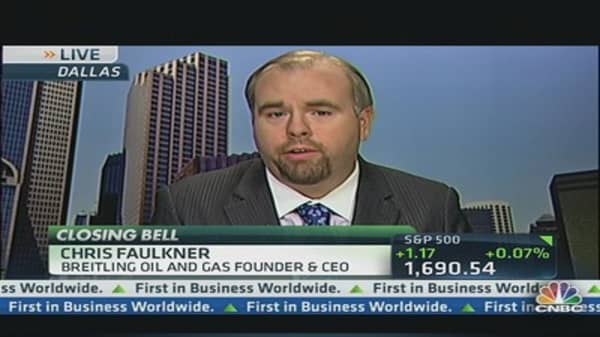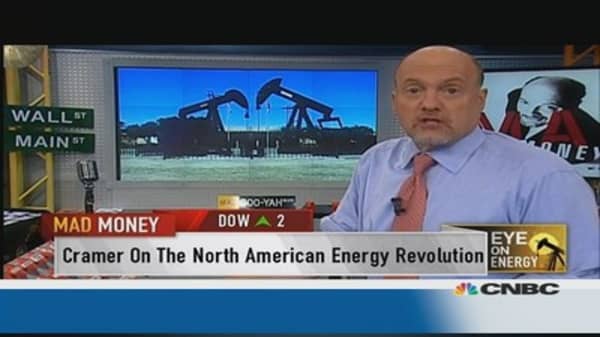The risk of a disorderly decline in benchmark U.S. crude futures is growing after a four-week rally sent prices to 16-month highs and money managers amassed record bullish bets, defying an economic slowdown in China and the North American shale energy supply boom.
WTI (West Texas Intermediate, the oil grade underpinning the U.S. crude futures benchmark) last Friday flipped to a slight premium over its Brent counterpart for the first time in three years, reflecting stronger refiner demand, U.S. economic optimism and efforts to drain the supply glut at the WTI oil storage hub of Cushing, Oklahoma. Brent's premium over its U.S. rival stood $1.26 a barrel at around 11.00 a.m. Singapore time on Wednesday.
(Read More: Don't mess with West Texas: US oil to keep outpacing Brent)
Although bullish momentum may continue to favor U.S. crude, WTI appears over-priced at current levels near $110 a barrel and a well-overdue reversal should bring the market closer in line with fundamentals, according to traders, strategists and analysts contacted by CNBC. Any softness in scheduled U.S. or China economic data releases this week may be the catalyst for the pullback, they added.
"We do not think that WTI's new-found supremacy can be sustained beyond a limited period of time," Credit Suisse analysts led by Jan Stuart, Head of Energy Research, wrote in a report on July 23. Though underlying supply and demand factors in the U.S. interior "make sense," the shape of the WTI forward curve is "abnormally steep" reflecting expectations of tighter supply, the bank noted.
"We would sell that structure, a little beyond the spot months, beginning with the first signs of fading of those near-term supply/demand fundamentals' strength."
(Read More: Watch out! The oil runup is getting hotter)
Credit Suisse added: "We suspect that another six to eight weeks of summer strength represent more upside than downside risk, mostly for Brent."
Any softness in scheduled U.S. or China economic data releases this week may be the catalyst for the pullback.
Activity in China's manufacturing sector slowed to an 11-month low in July as new orders faltered and the job market darkened, Reuters reported citing a preliminary survey on Wednesday, suggesting the world's second-largest economy is still losing momentum. The flash HSBC/Markit Purchasing Managers' Index fell to 47.7 this month from June's final reading of 48.2, marking a third straight month below the watershed 50 line which demarcates expansion of activities from contraction.
Brent crude and its U.S. counterpart were marginally weaker at $108.24 and $107 respectively at 11.00 a.m. Singapore time.


.530x298.jpg?v=1374482709)



